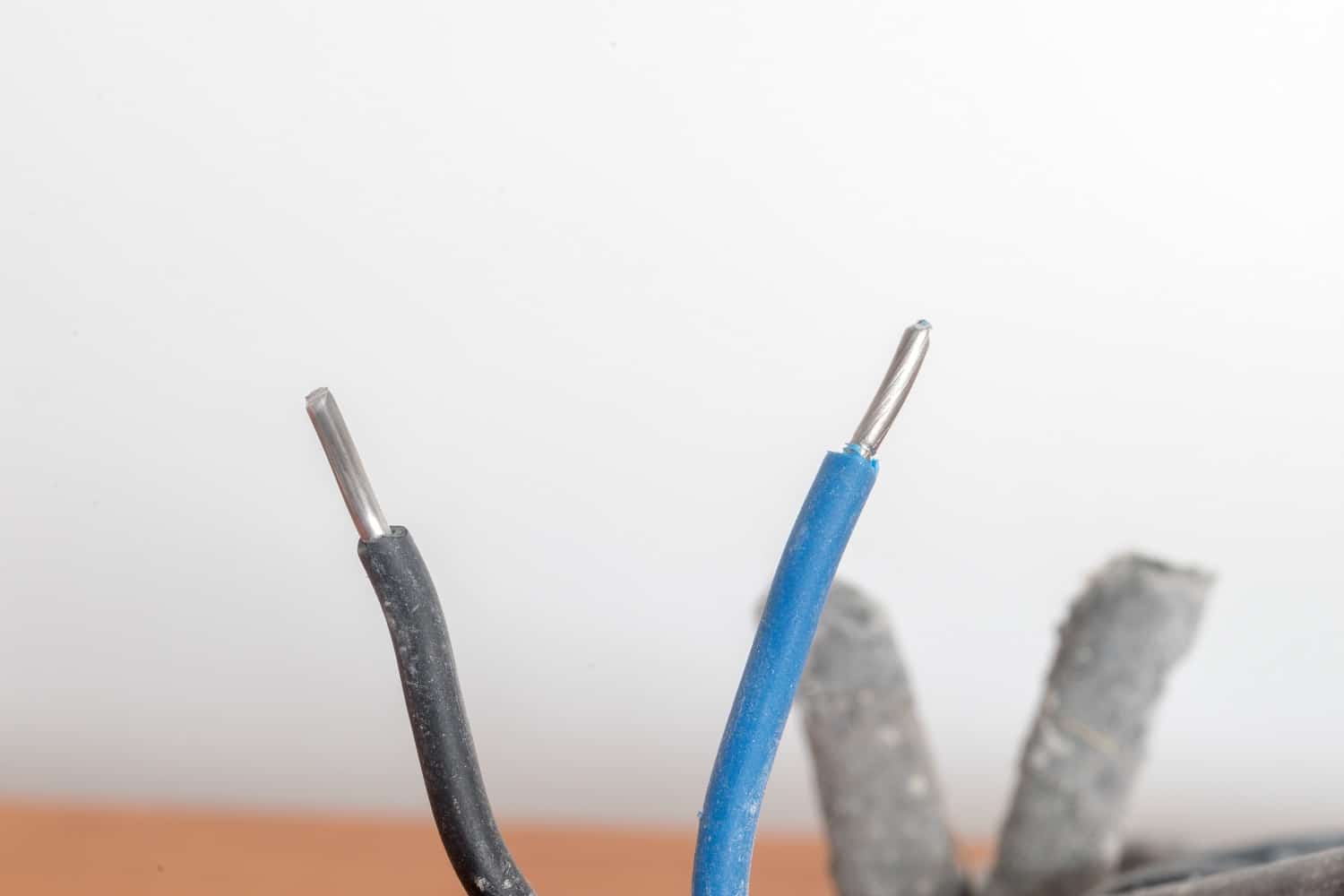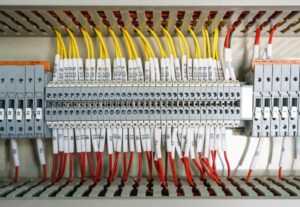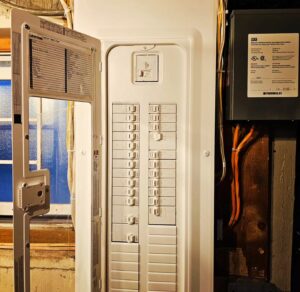Blog submitted by Hauer Power Electrical Inc. in Edmonton

As your Edmonton electrician, we know that safety is a top priority when it comes to electrical wiring. That’s why the majority of electrical companies in Edmonton recommend pigtail connections when connecting aluminum to copper wiring. Pigtail connections provide better insulation and protection from corrosion and, in the long run, save time and money. In this blog post, we will discuss why Edmonton electricians and electrical companies recommend pigtail connections for aluminum to copper wiring.
Table of Contents
ToggleWhat is Aluminum wiring, and why was it used?
Aluminum wiring is an electrical wiring system that was used extensively before the 1980s. During that time, copper was expensive, and aluminum was considered a cheaper alternative. Additionally, aluminum is lighter and more flexible than copper, making it easier to handle during installation. However, aluminum wiring has several drawbacks that can compromise your electrical safety.
Fun fact: Did you know that aluminum has a higher resistance than copper? This means that aluminum wiring has a higher chance of overheating, which can lead to electrical fires.
If you have aluminum wiring in your home, it’s important to be aware of the dangers and to take the necessary steps to ensure your electrical safety. This is where a qualified electrician in Edmonton comes in handy.
The dangers of Aluminum wiring
While Aluminum wiring was popular due to its affordability, it is now known to pose a significant fire hazard. According to the US Consumer Product Safety Commission, houses wired with Aluminum wiring before 1972 are 55 times more likely to have fire hazards than those wired with Copper wiring. The problem lies in the connection between the wiring and the electrical fixtures.
When Aluminum wiring connects to fixtures designed for Copper wiring, the Aluminum can expand and contract at a different rate, creating gaps that can cause arcing and fires. This is why it’s essential to work with a qualified electrical contractor to evaluate and potentially replace Aluminum wiring. One effective solution is pigtail connections, which involve attaching a short Copper wire to the Aluminum wire using a connector. From there, the Copper wire can connect safely to the fixture. In the following section, we’ll explain how pigtail connections work and why they’re crucial for electrical safety.
Copper vs. Aluminum wiring
Copper wiring has been the preferred choice for electrical systems for over a century. It is durable, flexible, and has excellent electrical conductivity. Did you know that the Empire State Building in New York City, one of the world’s most famous landmarks, is clad in copper? That’s because copper has excellent corrosion resistance and lasts for decades.
On the other hand, Aluminum wiring is a relatively newer addition to the electrical world. It was widely used in North America in the 1960s and 1970s due to a shortage of copper. However, it is less conductive than copper and prone to oxidation and corrosion. Over time, this can lead to overheating and a potential fire hazard.
When it comes to electrical safety, Copper is the clear winner. But what do you do if you have Aluminum wiring in your home? The answer lies in a pigtail connection. Electrician professionals recommend using pigtail connections to join Aluminum wiring to Copper wiring. It involves joining a short length of Copper wire to the Aluminum wire using a special connector and then connecting the Copper wire to the Copper terminals. The result is a safe and secure connection that avoids any contact between the Aluminum and Copper.
In the next section, we will dive deeper into pigtail connections and explore why they are necessary for Aluminum wiring.
Pigtail connections explained
Now, I know what you’re thinking: what the heck is a pigtail connection? Is it some sort of fancy hairdo for your wires? Well, not quite. A pigtail connection is simply a way of joining two different types of wiring together. So, what makes it so special? Well, let’s talk about the two types of wiring we’re dealing with: Aluminum and Copper. As we discussed earlier, Aluminum wiring can be a major safety hazard if not handled properly. But Copper wiring, on the other hand, is much more stable and reliable.
This is where the Edmonton electrician comes in. By using a pigtail connection, we’re able to combine the best of both worlds. Essentially, we’re taking a short length of Copper wire and using it to connect the Aluminum and Copper wires together. This creates a much safer and more stable connection than simply connecting the two wires directly. Not only does this increase safety, but it also helps to improve the overall performance of your electrical system. With a strong, reliable connection in place, you can trust that your wires will work the way they should and won’t fail unexpectedly.
Overall, pigtail connections are a great way to improve the safety and functionality of your electrical system. So, the next time you’re dealing with Aluminum and Copper wiring, don’t forget to call your friendly neighbourhood Edmonton electrician to get those pigtail connections installed!
Benefits of pigtail connections:
Pigtailing copper to aluminum connections is often done because it helps to reduce the risk of issues such as corrosion, overheating, and fire hazards that can arise from connecting aluminum directly to a device that is not aluminum rated. Copper and aluminum have different properties and react differently to temperature changes. Hence a direct connection without the proper installation can lead to thermal expansion and contraction issues, resulting in a compromised electrical connection that can overheat, which poses a serious safety hazard.
Pigtailing involves making a connection between the aluminum wire and a copper wire through a suitable connector or splice, with the addition of an oxidization inhibitor. This setup allows the copper to act as a bridge between the aluminum and the device it powers, thereby effectively mitigating the potential for overheating and other issues.
Pigtailing copper to aluminum connections is a smart and safe way to ensure that electrical systems function reliably and safely.
How to pigtail Aluminum to Copper wiring
Pigtailing aluminum to copper connections requires a few steps, and it’s important to follow proper techniques to ensure a safe and reliable electrical connection. Here’s a general overview of how to do it once all power is de-energized and proper safety precautions have been met.
1. Cut a copper wire to the length you need, and strip off about ¾ inch of the insulation from both ends of the copper wire.
2. Cut the aluminum wire at an angle and strip off about ¾ inch of the insulation from the end.
3. Coat the metal wires in the anti-oxidizing paste, and Twist the copper wire around the stripped end of the aluminum wire tightly using pliers to create a secure connection. Make sure that the wires are twisted together as tightly as possible.
4. Slip an aluminum to copper rated wire connector over the twisted connection, with strict attention to ensuring that the connector is suitable for copper to aluminum connection. You can find connectors specially designed for pigtail connections at electrical supply stores.
5. Inspect the connection, ensuring it is secure, without loose wires. Give a gentle tug to the wires to confirm they are properly connected.
6. Repeat the process for each connection required. Once completed, verify that the connections are giving correct voltages and function test the devices.
Following these steps will help you create a reliable and safe connection when pigtailing copper to aluminum connections. Remember, safety is always a number one concern, and if you’re not qualified to do electrical work, we highly recommend hiring a professional electrician.
Finding a qualified electrician for pigtail connections
There is a saying that goes, “Failing to plan is planning to fail.” No one wants to fail when hiring a trustworthy electrical contractor. Taking the time to research your electrical contractor is essential. Start by looking up their Google reviews and paying close attention to the quantity.
Best not to even consider a contractor with less than 200, as that could just be family and friends. Go for the most reviews with the highest rating, and this will help to ensure honesty and accuracy in their social proof. Also, check out their website to get a sense of their services and experience. Oftentimes a fly-by-night company will not have this information readily available.
It’s always better to be safe than sorry. Taking that extra time to research an electrical contractor will save you a lot more headaches and time in the near future. It’s important to sift through bad reviews and see how that company might have upset past clients so they don’t take you for a run as well.
At Hauer Power Electrical, we take pride in our customer service, and we are trained and qualified to handle all aluminum to copper wiring projects, big and small. Check us out at https://hauerpower.ca and give us a call to learn more about why we are Edmonton’s top rated
electrical contractor.









